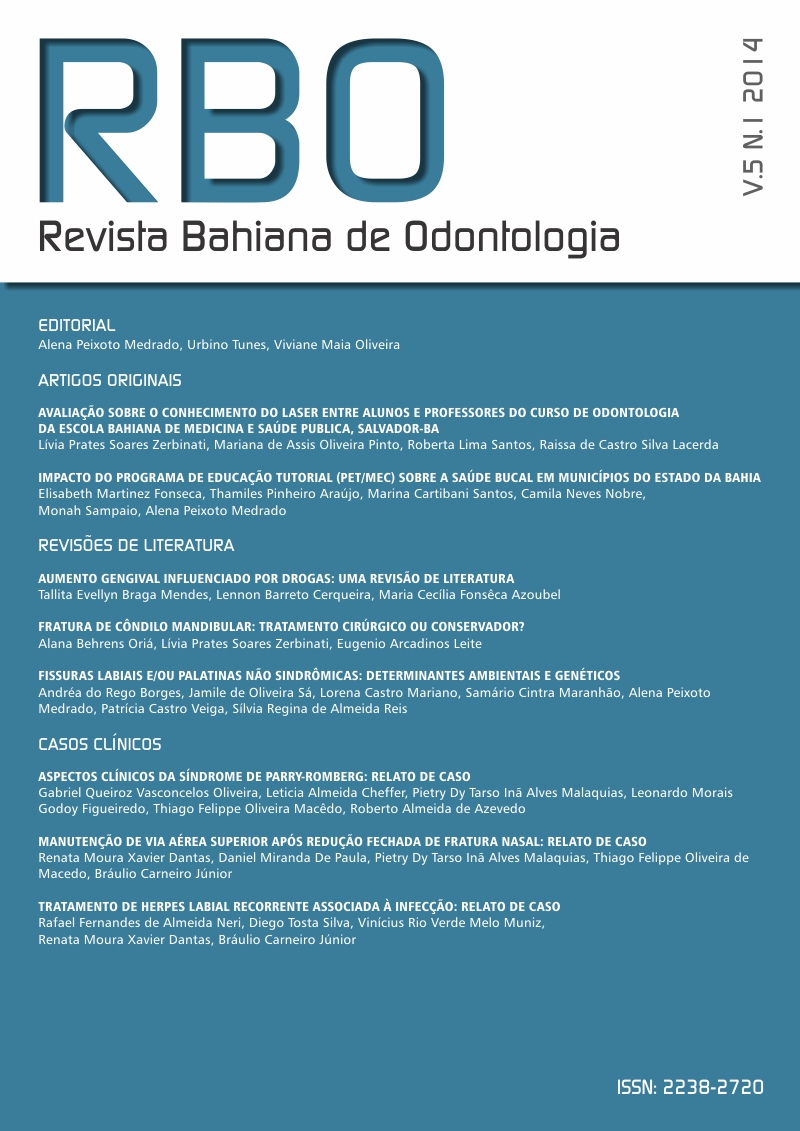NONSYNDROMIC CLEFT LIP AND/OR PALATE: ENVIRONMENTAL AND GENETIC DETERMINANTS
DOI:
https://doi.org/10.17267/2596-3368dentistry.v5i1.329Keywords:
Genetic polymorphism, Cleft lip, Cleft palateAbstract
The nonsyndromic cleft lip and/or palate (NSCL/P) is a birth anomaly resulting from fusion defects of craniofacial processes. These changes have varied incidence and are more common in nonsyndromic form. The aim of this paper is conduct a literature review about NSCL/P, emphasizing the genetic aspects. In the critical analysis of the selected articles was founded that several genes and chromosomal regions have been associated with orofacial clefts in Genome Wide Association Studies (GWAS), like the genes IRF6, ABCA4, MAFB and region 8q24. It is a developmental disorder of multifactorial origin, involving environmental and genetic agents. The authors also observed strong interference of ethnic factors, particularly in studies of the case-control type. Some polymorphisms were identified in replicated GWAS studies and associated with cleft in the Brazilian population, like the polymorphism rs987525, rs1530300 and rs560426. When the population is stratified, like in Brazil, the ethnic composition has problably a strong effect on the genetic association with NSCL/P. It is recommended the study of genetic ancestry into research’s associating genetic polymorphisms on orofacial clefts.



